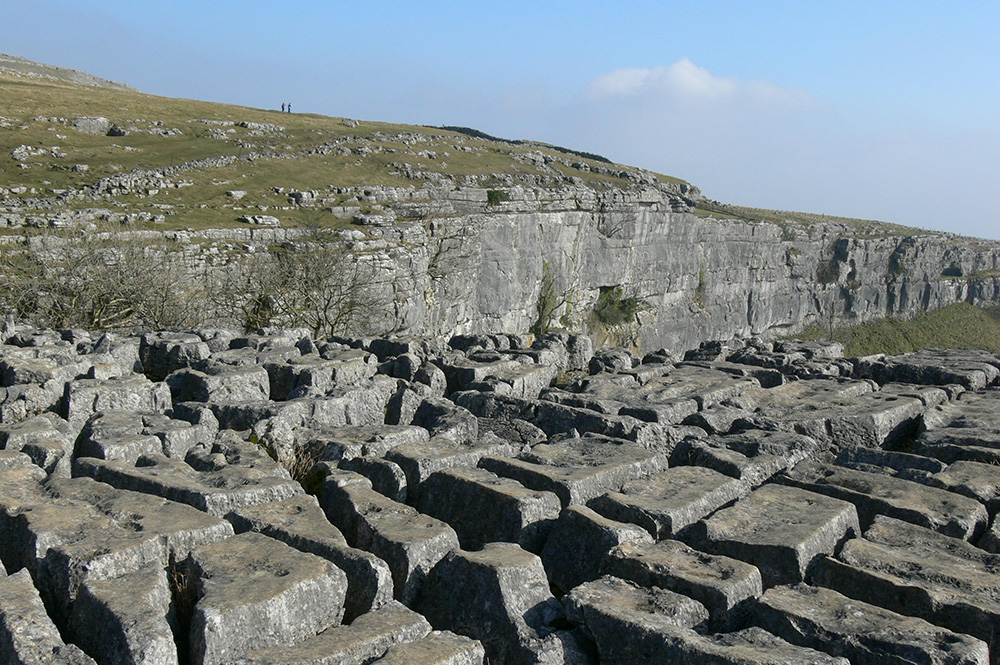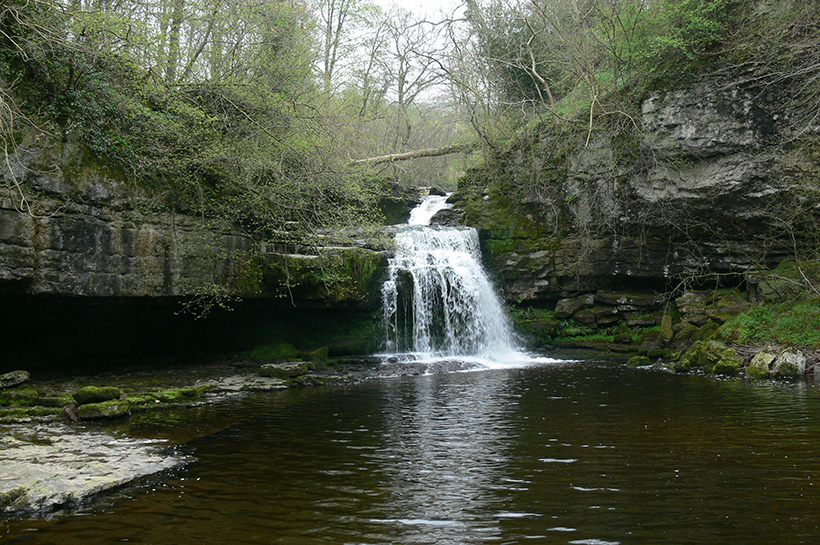

 The end of the Silurian saw a dramatic change in the local environment. The sea shallowed, and during a major mountain building interval (the Caledonian), the rocks were uplifted, folded (3), intruded by the Wensleydale Granite (4), and, eroded under tropical desert conditions. By the end of the Devonian, weathering and erosion had worn the rocks flat (5) before they were swamped by the tropical seas of the Carboniferous period. Around the town of Sedbergh, remnants of this eroded surface, are believed to be represented by the Sedbergh Conglomerate (Upper Old Red Sandstone Group), but over most of the area 80 million years of Earth history are missing.
The end of the Silurian saw a dramatic change in the local environment. The sea shallowed, and during a major mountain building interval (the Caledonian), the rocks were uplifted, folded (3), intruded by the Wensleydale Granite (4), and, eroded under tropical desert conditions. By the end of the Devonian, weathering and erosion had worn the rocks flat (5) before they were swamped by the tropical seas of the Carboniferous period. Around the town of Sedbergh, remnants of this eroded surface, are believed to be represented by the Sedbergh Conglomerate (Upper Old Red Sandstone Group), but over most of the area 80 million years of Earth history are missing.
 Photo: Devonian Conglomerate – Sedbergh Conglomerate
Photo: Devonian Conglomerate – Sedbergh Conglomerate
 Figure: Blocks and basins © BGS (NERC)
Figure: Blocks and basins © BGS (NERC)






